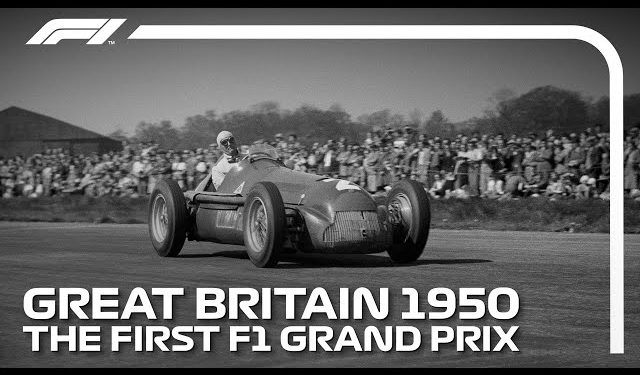Celebrating 75 Years of Formula 1: Fascinating Facts from the Inaugural Race at Silverstone
As Formula 1 marks the 75th anniversary of its very first race, held at Silverstone on May 13, 1950, we delve into ten captivating facts about this historic event that laid the foundation for the world’s premier motorsport.
A Dual Identity: Two Names for One Race
The inaugural race was officially titled the Grand Prix d’Europe, a first for an event outside Italy or France. However, given its location in the UK, it also bore the name of the British Grand Prix. Uniquely, this race took place later in the year than most season openers, with only seven others being held after May.
The First Corner: A Historic Start
The race began at Woodcote, the first corner in F1 history. This sweeping right-hander was the starting point of a 4.6 km circuit featuring six additional turns, including the famous Maggots and Becketts complex. The grid formation was a 4-3-4 layout, setting the stage for a thrilling start.
Royal Attendance
An impressive crowd of around 120,000 spectators gathered, including a distinguished guest—King George VI, who attended with Queen Elizabeth and Princess Margaret. This marked a rare occasion where a reigning monarch was present at a British motor race.
Aristocrats on the Track
The entry list featured notable figures, including Prince Birabongse Bhanudej Bhanubandh of Thailand, known as Prince Bira, and Swiss Baron Emmanuel de Graffenried. Both drivers showcased their aristocratic backgrounds, though neither finished the race due to mechanical issues.
The “Three Fs” of Alfa Romeo
Alfa Romeo dominated the event with three pre-race favorites: Giuseppe “Nino” Farina, Luigi Fagioli, and Juan Manuel Fangio, all of whom qualified in the top three positions. Farina ultimately claimed victory, leading Fagioli across the line by just 2.6 seconds after a gripping 70-lap battle.
Unexpected Encounters
In a surprising incident, British driver Reg Parnell’s car collided with a hare during the race, causing damage that could have ended his race prematurely. The unpredictable nature of the event was reflected not just in the racing but also in the local wildlife.
A Mature Field
The average age of the drivers in this inaugural race was 39, considerably older than today’s competitors. Three drivers were in their fifties, highlighting a different era in motorsport where experience played a crucial role.
A Jazz Musician’s F1 Debut
Among the participants was Belgian driver Johnny Claes, known more for his musical career than his racing prowess. He finished 11th, six laps down, but his involvement added a unique twist to the event’s narrative.
BRM’s Technical Challenges
The British Racing Motors (BRM) team aimed to debut their V16 Type 15 car at Silverstone but faced technical difficulties. The car only completed a few demonstration laps, delaying its official racing debut until the following year.
Stirling Moss: A Star in the Making
Though he didn’t compete in the main event, a young Stirling Moss participated in the support races, finishing second. His future success would later solidify his legacy as one of the sport’s greatest drivers.








